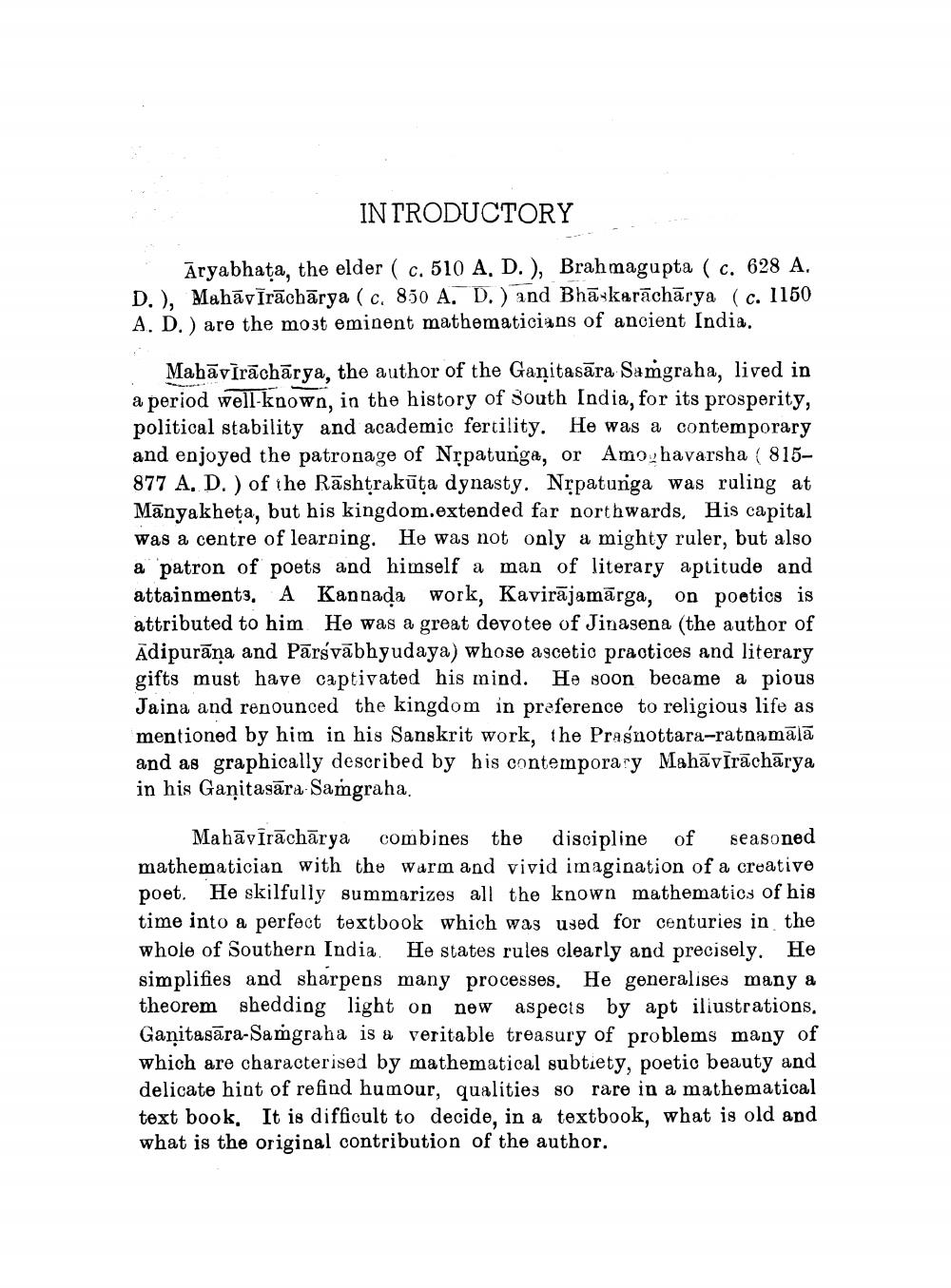________________
IN TRODUCTORY Āryabhata, the elder ( c. 510 A, D.), Brahmagupta ( c. 628 A. D.), Mahāvīrāchārya (c. 850 A. D.) and Bhā karāchārya (c. 1150 A. D.) are the most eminent mathematicians of ancient India.
Mahāvīrāchārya, the author of the Ganitasāra Samgraha, lived in a period well-known, in the history of South India, for its prosperity, political stability and academic fertility. He was a contemporary and enjoyed the patronage of Nrpatunga, or Amoghavarsha ( 815877 A, D.) of the Rāshtrakūta dynasty. Nrpatunga was ruling at Mānyakheta, but his kingdom.extended far northwards, His capital was a centre of learning. He was not only a mighty ruler, but also a patron of poets and himself a man of literary aptitude and attainments. A Kannada work, Kavirājamārga, on poetics is attributed to him He was a great devotee of Jinasena (the author of Adipurāna and Pārsvābhyudaya) whose ascetic practices and literary gifts must have captivated his mind. He soon became a pious Jaina and renounced the kingdom in preference to religious life as mentioned by him in his Sanskrit work, the Prasnottara-ratnamālā and as graphically described by his contemporary Mahāvīrāchārya in his Ganitasāra Samgraha.
Mahāvīrāchārya combines the discipline of seasoned mathematician with the warm and vivid imagination of a creative poet. He skilfully summarizes all the known mathematics of his time into a perfect textbook which was used for centuries in the whole of Southern India. He states rules clearly and precisely. He simplifies and sharpens many processes. He generalises many a theorem shedding light on new aspects by apt iliustrations, Ganitasāra-Samgraha is a veritable treasury of problems many of which are characterised by mathematical subtiety, poetic beauty and delicate hint of refind humour, qualities so rare in a mathematical text book. It is difficult to decide, in a textbook, what is old and what is the original contribution of the author.




